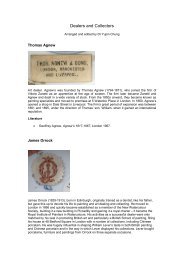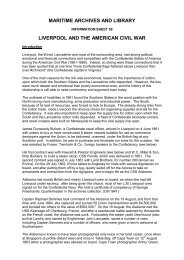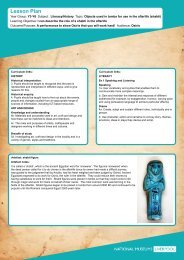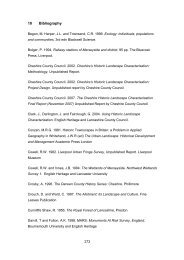full Contemporary Slavery Teachers' Resource - National Museums ...
full Contemporary Slavery Teachers' Resource - National Museums ...
full Contemporary Slavery Teachers' Resource - National Museums ...
Create successful ePaper yourself
Turn your PDF publications into a flip-book with our unique Google optimized e-Paper software.
seCTIon B<br />
Forced labour Contract slavery<br />
Isolated, poor or homeless elderly people can become victims of local “mafia” gangs,<br />
especially those that target vulnerable people for enslavement and exploitation.<br />
Case study 3. Frank (Hungary 2010)<br />
A 69-year-old Hungarian man known as “Uncle Frank” was sold by his son-in-law for<br />
40,000 Forints (approximately £125) to a family who held him for three years on a farm.<br />
This is Frank’s story.<br />
I had to feed nine horses and do farm work. My home was the barn. I was given leftovers<br />
to eat once or twice a day. sometimes I was unable to eat anything because the family’s<br />
children would mix sand into my food. If I went into the city I was accompanied by two<br />
of my captors to stop me from escaping. I was assaulted several times. The farm owners<br />
stole my pension and my car.<br />
I was finally able to escape when a police identity check on the car revealed that it<br />
belonged to me. The police found me living in the barn and informed the local mayor’s office<br />
about their suspicions. social workers decided to investigate the situation and during their<br />
visit, when my owners were not listening, I asked for help. I was given shelter by Hungarian<br />
Interchurch Aid who are now helping me to learn how to live in normal society again.<br />
I’m still afraid of the farm owners, and I haven’t decided yet whether to take legal<br />
action against them, so they might get away with it.<br />
Questions and discussion points<br />
• What words would you use to describe the way Frank was treated?<br />
• What made it difficult for him to challenge his situation?<br />
• How do you think he felt about his captors?<br />
• Why is he still afraid of the farm owners now that he is free?<br />
seCTIon B<br />
In contract slavery people are usually recruited for jobs in factories and workshops far<br />
from where they live, and sometimes in other countries, but when they arrive they find<br />
they have been deceived, and are enslaved.<br />
Case study 4. Vi (American Samoa, 2001)<br />
Vi is Vietnamese. she signed a contract with a company that said it would take her to<br />
the UsA to work, promising her a salary of $408 (about £260) a month. she borrowed<br />
$6,000 (nearly £4,000) which she paid to the company to take her to America and<br />
arrange for her to get the job.<br />
But they didn’t take her to America. Instead she found herself in American samoa, a<br />
group of islands in the south Pacific. When she landed, her passport was confiscated and<br />
she had to work at a factory making clothes from 7 o’clock in the morning until 2 o’clock<br />
the next morning, seven days a week, without pay.<br />
eventually the workers found lawyers who would help them take the factory owner to<br />
court for trafficking and enslaving people, and Vi was taken to the UsA. But she is still<br />
paying off her debt.<br />
This is Vi’s story:<br />
We were taken to American samoa and not the United states. As soon as we landed,<br />
our passports were confiscated. At a Daewoosa shop, I had to work from 7am to 2am<br />
and sometimes to 7am the next day, and also on saturdays and sundays, without pay.<br />
Meals at Daewoosa consisted of a few cabbage leaves, and potatoes cooked with a lot of<br />
water. We planted some vegetables to supplement our meals, but Mr Lee, the President<br />
of Daewoosa, destroyed our garden. Undernourished, I lost 35 pounds (16kg) within one<br />
year and weighed only 78 pounds (35kg).<br />
There was no ventilation. The temperature in the rooms sometimes went up to over<br />
100 degrees. We were not allowed to step out for fresh air. The supervisor even kept<br />
count of how many times we went to the toilet. We lived 36 people in one room. Another<br />
worker and I shared one tiny bed.<br />
Mr Lee used big American samoan guards to terrorise us. once, several workers staged<br />
a strike because they were not paid. He threatened that he would send these guards to<br />
short-circuit electric cables and cause a fire to kill us all.<br />
since my arrival in the Us, I have sent every dollar earned back to Vietnam to pay my<br />
debt. However, this has barely made a dent because the interest rate is so high at 50%.<br />
My parents in Vietnam are very worried. If I’m allowed to remain in the Us, I would like<br />
to go back to school because in Vietnam I had to stop schooling at seventh grade. I also<br />
wish to be reunited with my child left behind in Vietnam.<br />
Questions and discussion points<br />
• What were the worst things about Vi’s living conditions?<br />
• Who do you feel more angry with – the president of Daewoosa or the supervisor? Why?<br />
• Who was responsible for Vi’s situation?<br />
• What would you like to ask or say to Vi?<br />
<strong>Contemporary</strong> slavery Teachers’ <strong>Resource</strong> 59


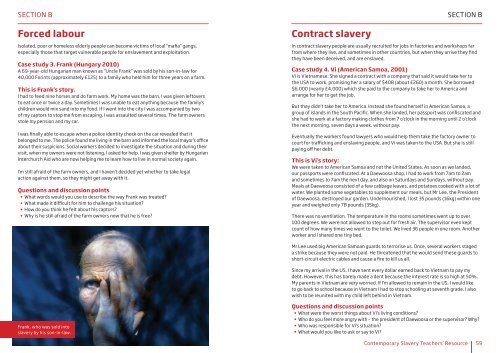
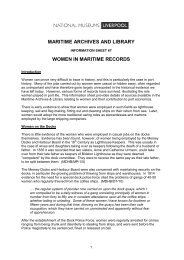
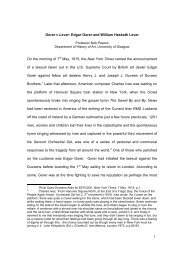
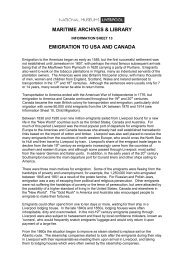
![Ancient Egypt trail [227kb .pdf] - National Museums Liverpool](https://img.yumpu.com/48998817/1/184x260/ancient-egypt-trail-227kb-pdf-national-museums-liverpool.jpg?quality=85)

